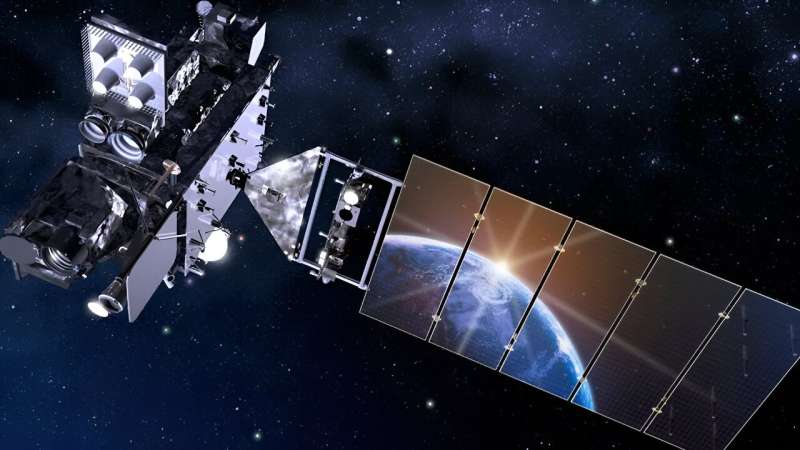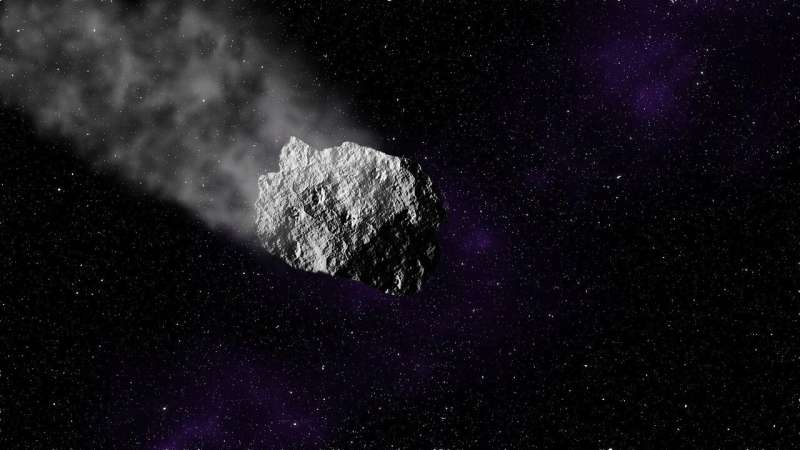
Copernical Team
Texas A and M joins multimillion-dollar moon orbit tracking project
 Texas A and M University is joining a multi-university team on a major research project to track objects orbiting the moon. The Air Force Research Laboratory is awarding up to $5 million over five years for the Space University Research Initiative (SURI).
"The SURI is an outstanding initiative to train our next-generation workforce. We look forward to carrying out creative research aimed a
Texas A and M University is joining a multi-university team on a major research project to track objects orbiting the moon. The Air Force Research Laboratory is awarding up to $5 million over five years for the Space University Research Initiative (SURI).
"The SURI is an outstanding initiative to train our next-generation workforce. We look forward to carrying out creative research aimed a CRS-29 mission flies research to the Space Station
 The 29th SpaceX commercial resupply services (CRS) mission for NASA carries scientific experiments and technology demonstrations, including studies of enhanced optical communications and measurement of atmospheric waves. The uncrewed SpaceX Dragon spacecraft is scheduled to launch to the International Space Station from the agency's Kennedy Space Center in Florida no earlier than Nov. 5.
The 29th SpaceX commercial resupply services (CRS) mission for NASA carries scientific experiments and technology demonstrations, including studies of enhanced optical communications and measurement of atmospheric waves. The uncrewed SpaceX Dragon spacecraft is scheduled to launch to the International Space Station from the agency's Kennedy Space Center in Florida no earlier than Nov. 5. Dragonfly tunnel visions
 With its dense atmosphere and low gravity, Saturn's moon Titan is a great place to fly.
But well before NASA's Dragonfly rotorcraft lander soars through Titan's skies, researchers on Earth - led by the Johns Hopkins Applied Physics Laboratory (APL) in Laurel, Maryland - are making sure their designs and models for the nuclear-powered, car-sized drone will work in a truly unique environment
With its dense atmosphere and low gravity, Saturn's moon Titan is a great place to fly.
But well before NASA's Dragonfly rotorcraft lander soars through Titan's skies, researchers on Earth - led by the Johns Hopkins Applied Physics Laboratory (APL) in Laurel, Maryland - are making sure their designs and models for the nuclear-powered, car-sized drone will work in a truly unique environment Astronomers carry out largest ever cosmological computer simulation
 An international team of astronomers has carried out what is believed to be the largest ever cosmological computer simulation, tracking not only dark but also ordinary matter (such as planets, stars and galaxies), giving us a glimpse into how our Universe may have evolved. The FLAMINGO simulations calculate the evolution of all components of the universe - ordinary matter, dark matter, and dark
An international team of astronomers has carried out what is believed to be the largest ever cosmological computer simulation, tracking not only dark but also ordinary matter (such as planets, stars and galaxies), giving us a glimpse into how our Universe may have evolved. The FLAMINGO simulations calculate the evolution of all components of the universe - ordinary matter, dark matter, and dark Exoplanet-informed research helps search for radio technosignatures
 In a new study published in the Astronomical Journal, researchers used the known population of exoplanets and extrapolated to the much larger, unknown population of exoplanets to set better thresholds for planetary effects on signals from ETIs (extraterrestrial intelligences). The prior recommendation for the threshold "drift rate" contribution, caused by a planet's motion around its host star,
In a new study published in the Astronomical Journal, researchers used the known population of exoplanets and extrapolated to the much larger, unknown population of exoplanets to set better thresholds for planetary effects on signals from ETIs (extraterrestrial intelligences). The prior recommendation for the threshold "drift rate" contribution, caused by a planet's motion around its host star, A Russian satellite has shifted within 60 km of another spacecraft

When it comes to saber-rattling, few countries employ it as much as Russia does. During their ongoing invasion and occupation of Ukraine, the country's leadership has repeatedly threatened to use atomic weapons. But the threats don't stop there.
A private company called Slingshot Aerospace says Russia has maneuvered one of their Luch satellites uncomfortably close to Western spacecraft in GEO (geostationary orbit.)
And it's not the first time.
The satellite in question is named Luch (Olymp) 2 and its Norad ID is 55841. Russia launched it in March of 2023, and it's a successor to Luch (Olymp) Norad ID 40258. The naming conventions are a little confusing, but Luch 1 was a well-known interloper.
Two groups look at the economic viability of mining asteroids

Two teams of economists have conducted economic assessments of mining asteroids—one of them is a trio with one member each from the University of Tor Rome Vergata, the University of Maryland and Middlebury College. They looked at asteroid mining as part of the next logical step in monetizing space exploration.
The second group, with three members from the Colorado School of Mines and a fourth with the International Monetary Fund, focused more on the challenges that would have to be surmounted for industry to capitalize on assets that are currently free for the taking on asteroids. Both groups have published papers describing their efforts in the journal Proceedings of the National Academy of Sciences.
Prior research has shown that there are valuable materials on asteroids. This includes diamonds and perhaps other gems, but the truly valuable materials are more likely to be metals that are highly valued but in short supply here on Earth, such as cobalt, nickel and platinum. Such metals have seen a rise in value in recent years as they have been used in a host of modern technology products such as batteries, solar panels and windmill parts.
European Flight Ticket Initiative now open to launch service providers

Today, the European Commission and the European Space Agency are calling on established and aspiring European launch service providers to apply to join the European Flight Ticket Initiative. The objective of the Flight Ticket initiative is to stimulate new European launch systems through open competition starting with In-orbit Demonstration and Validation (IOD/IOV) needs.
RADARSAT+: over $1 billion for the future of satellite Earth observation
 The Government of Canada recently allocated $1.012 billion to the Canadian Space Agency to support immediate and future satellite Earth observation (EO) data needs. This funding will be used to:
+ design and develop a replacement satellite for the RADARSAT Constellation Mission (RCM)
+ design a next-generation satellite system to succeed the RCM
This initiative is called RADARS
The Government of Canada recently allocated $1.012 billion to the Canadian Space Agency to support immediate and future satellite Earth observation (EO) data needs. This funding will be used to:
+ design and develop a replacement satellite for the RADARSAT Constellation Mission (RCM)
+ design a next-generation satellite system to succeed the RCM
This initiative is called RADARS 
